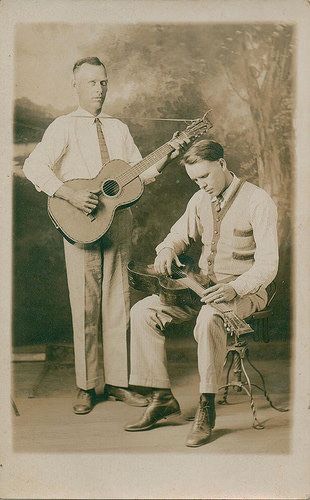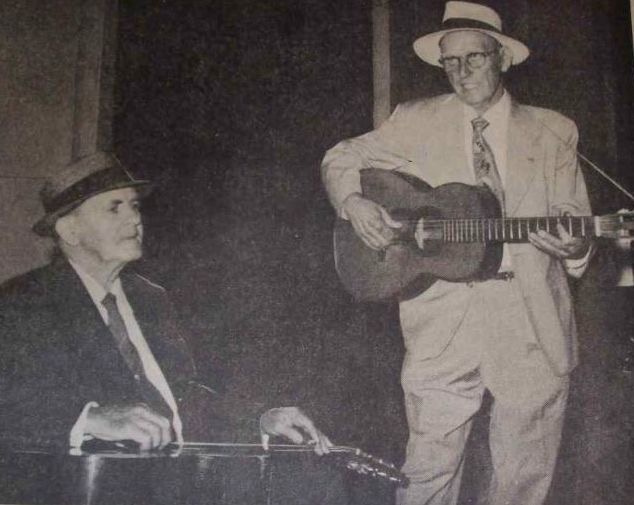
Jimmie Tarlton was born on 8 May, 1892, in Cheraw, South Carolina. He grew up on a farm in Chesterfield County, South Carolina learning folk songs from an early age. Tarlton's style was rooted in rural South Carolina, where he was born and raised. His father, a sometime farmer and sawmill worker, played a fretless banjo and his mother sang. At age six, Tarlton was playing banjo and French harp, and he later took up the guitar and learned to play bottleneck, using glass and a knife.
He left home at seventeen and started busking into the 1920s. In 1922 Tarlton met Frank Ferera, who taught him how to play the Hawaiian guitar. Tarlton used both Negro Blues and Hawaiian styling to create an intriguing guitar sound.
In 1927 he moved to Columbus, Georgia where he met Tom Darby, another skilled guitar player and a solid Blues musician. They began performing together and were spotted by Columbia talent scout Frank Walker. On April 5, 1927 they cut their first two sides for Columbia, Down In Florida On A Hog and Birmingham Town, which were released as a single. The recording sold well enough to allow a second recording session and on November 10, 1927 they recorded a further four songs, among them Birmingham Jail and Columbus Stockade Blues. Those two songs, coupled on one record, became the duo's biggest hit selling more than 200,000 copies. Tarlton would claim that he wrote Columbus Stockade Blues when he was himself imprisoned there in 1925 and that the song earned him a pardon.
Thomas P. Darby was born on 25 August, 1891, in Columbus, Georgia, but little else seems to be known about him.
Although Darby and Tarlton had a substantial hit with Columbus Stockade Blues and Birmingham Jail, they profited little from the success as they had chosen a flat payment of $75 for the records, rather than a share of the royalties. They recorded 63 songs between 1927 and 1933, but no other releases enjoyed similar success.
Tarlton and Darby were never especially fond of each other. In 1930 Tarlton was already recording as a solo artist, not only for Columbia, but also for Victor and ARC. In 1931 Tom Darby formed a duo with Jesse Pitts, the Georgia Wildcats, recording at least six sides for Victor (though four remain unreleased).
Tarlton and Darby’s final recordings together were made in June 1933 for ARC. They then split up professionally and Darby more or less dropped out of the music scene altogether, followed by Tarlton in the mid-1940s. although they both saw some activity in the 1960s as part of the folk-blues revival, and Tarlton got to make a record.
Tarlton was rediscovered in 1963, living in Phenix City, Alabama, and became a renowned figure in the folk and folk-blues revival. Tarlton played some shows at the Ash Grove in Los Angeles, and even made a record.

In the summer of 1963, Darby and Tarlton were reunited when they agreed to be part of the Columbus Symphony orOrchestra’s opening pops concert in Weracoba Park, Columbus. They performed Columbus Stockade Blues, and some other numbers including Longest Train I Ever Saw and Lonesome In Pines.
Tarlton became one of a handful of figures—country fiddler Eck Robertson is another—who preserved a style of music-making that would otherwise have been lost and embellished it into becoming something new and all his own. His music, as preserved on his solo sides recorded at his own home in the early 1960s by then incorporated the influences of Hawaiian guitar and ragtime, but beneath it all was a native South Carolina folk style that pre-dated recorded music.
Tom Darby died on 20 August, 1971. Jimmie Tarlton died on 29 November, 1979.